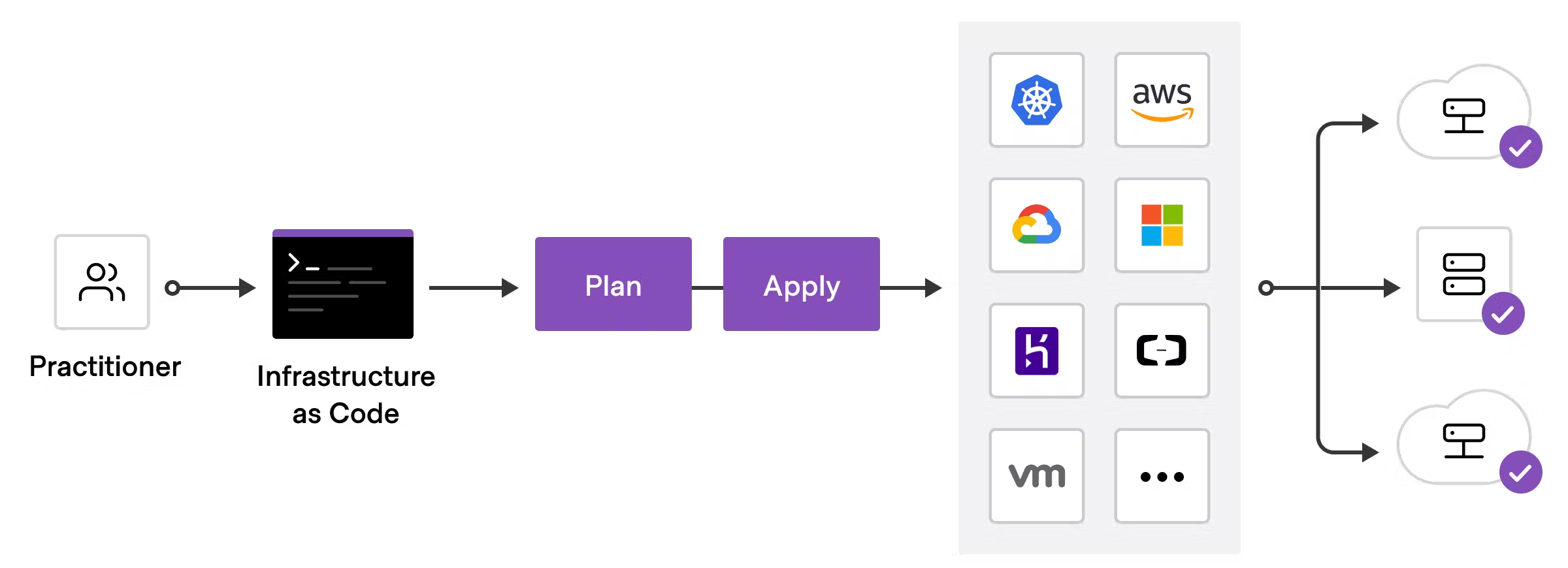Terraform
Terraform serves as HashiCorp’s dedicated IaC tool, empowering users to articulate resources and infrastructure through human-readable, declarative configuration files. It goes beyond mere definition, actively managing the entire lifecycle of your infrastructure. The beauty lies in its ability to interpret configuration files, generate execution plans, and execute them to bring your infrastructure to the desired state. As the configuration changes, Terraform can determine what changed and create incremental execution plans that can be applied.
The infrastructure Terraform can manage includes both low-level components such as compute instances, storage, and networking, and high-level components such as DNS entries and SaaS features.

Terraform workflow
Using Terraform has several advantages over manually managing your infrastructure:
- Terraform can manage infrastructure on multiple cloud platforms.
- The human-readable configuration language helps you write infrastructure code quickly.
- Terraform’s state allows you to track resource changes throughout your deployments.
- You can commit your configurations to version control to safely collaborate on infrastructure
Key features of Terraform
Infrastructure as code
Infrastructure is described using a high-level configuration syntax. This allows a blueprint of your datacenter to be versioned and treated as you would any other code. Additionally, infrastructure can be shared and re-used.
Execution plans
Terraform has a planning step in which it generates an execution plan. The execution plan shows what Terraform will do when you execute the apply command. This lets you avoid any surprises when Terraform manipulates infrastructure.
Resource graph
Terraform builds a graph of all your resources and parallelizes the creation and modification of any non-dependent resources. Because of this, Terraform builds infrastructure as efficiently as possible, and operators get insight into dependencies in their infrastructure.
Change automation
Complex changesets can be applied to your infrastructure with minimal human interaction. With the previously mentioned execution plan and resource graph, you know exactly what Terraform will change and in what order, which helps you avoid many possible human errors.